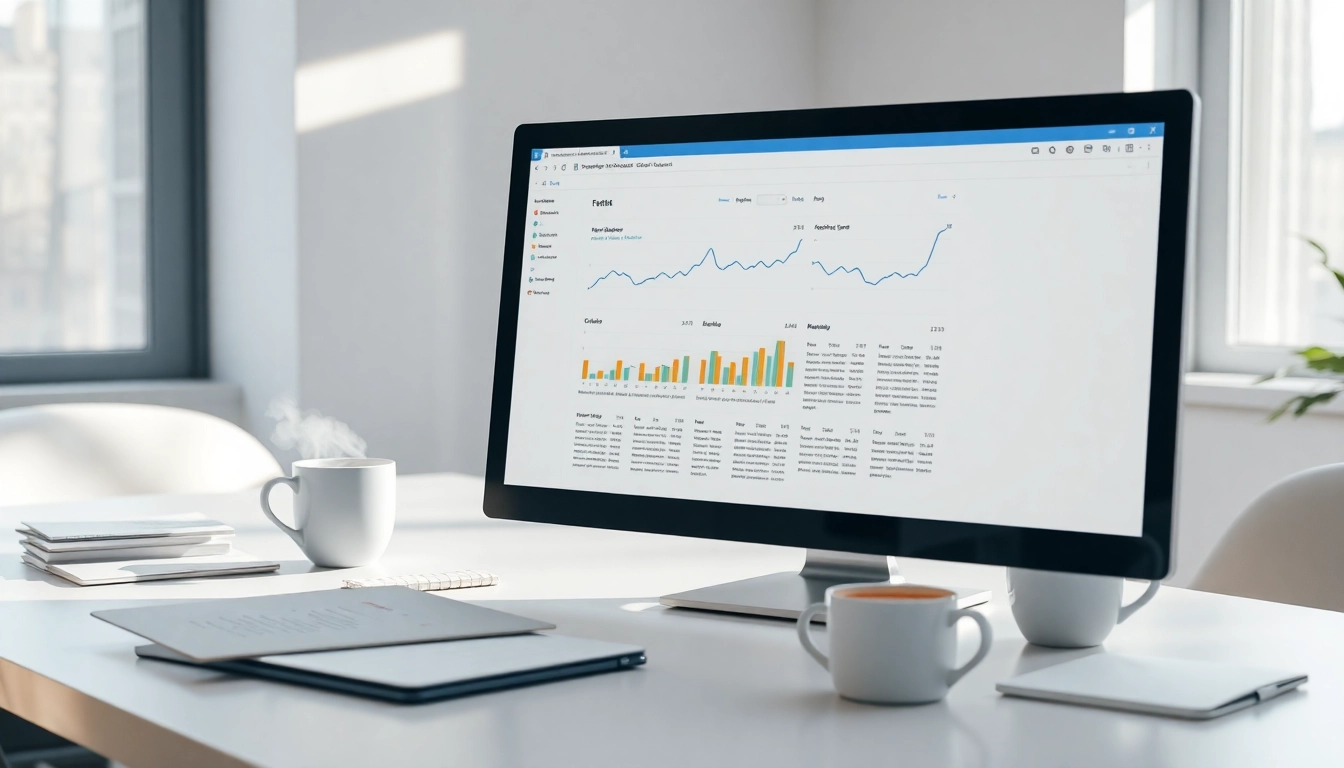Understanding the Importance of a Plagiarism Checker
A plagiarism checker is a vital tool for anyone engaged in writing, from students to educators to content creators. The importance of maintaining originality in writing cannot be overstated, as plagiarism has serious consequences that can affect academic integrity and professional credibility. By employing a plagiarism checker, individuals can ensure that their work is original and properly attributed, thus protecting themselves from potential repercussions.
Defining Plagiarism and Its Consequences
Plagiarism is generally defined as the act of using someone else’s work, ideas, or expressions without proper acknowledgment. It can take various forms, including:
- Direct copying: Using another person’s exact words without quotation marks or citation.
- Paraphrasing: Rephrasing someone else’s ideas without giving credit.
- Self-plagiarism: Reusing one’s own previous work without acknowledgment.
- Collusion: Working with others to produce shared work, without proper citation of contributions.
The consequences of plagiarism can be severe and wide-ranging. In academic settings, it can lead to failing grades, expulsion from educational institutions, and damage to one’s academic record. In professional environments, plagiarism can result in loss of reputation, job termination, and legal consequences, particularly in industries like publishing and research where original content is highly valued.
The Role of Plagiarism Checkers in Education
In educational contexts, plagiarism checkers serve multiple functions. They are essential tools for instructors grading written assignments, ensuring students adhere to academic integrity guidelines. By checking submissions against a broad database of sources, plagiarism checkers can quickly identify copied materials, allowing educators to provide timely feedback and address issues before they escalate.
For students, using a plagiarism checker helps ensure their work meets academic standards. It can serve as a learning tool, enabling students to understand proper citation practices and the importance of originality in scholarly work. Regular use of these tools can foster a culture of honesty and accountability in academic environments.
How Plagiarism Affects Originality in Writing
Originality in writing is crucial not only for academic success but also for fostering creativity and critical thinking. When writers do not engage genuinely with content, the overall quality of writing suffers. Plagiarism hinders an individual’s ability to develop their voice and style, ultimately leading to a lack of innovation in their work.
Moreover, widespread issues with plagiarism can diminish the trustworthiness of academic and professional discourse. Original research and unique ideas enrich knowledge in any field, while plagiarism undermines this process, leading to a homogenization of content that stifles creativity and development.
Types of Plagiarism Checkers Available
Plagiarism checkers vary widely in terms of features, pricing, and technology. Understanding the different types available can help users choose the best option for their needs.
Free vs. Paid Plagiarism Checkers
One primary distinction among plagiarism checkers is the difference between free and paid options. Free plagiarism checkers offer basic functionality, often checking against limited sources. They may be sufficient for casual users or for basic school assignments but might not provide thorough results compared to their paid counterparts.
Paid plagiarism checkers, on the other hand, typically provide extensive databases, advanced algorithms, and additional features like grammar checks and writing suggestions. They often specialize in various texts, ensuring high accuracy and reliability in detecting plagiarism.
AI-Based Plagiarism Checkers
AI-based plagiarism checkers represent a significant advancement in plagiarism detection technology. These systems use artificial intelligence to analyze text, allowing for a deeper understanding of context and meaning. AI-driven tools can identify more subtle forms of plagiarism, such as paraphrasing that retains the original intent without direct copying. This capability helps ensure comprehensive checks that go beyond mere word-for-word comparison.
Additionally, AI plagiarism checkers often come with features that provide suggestions for improving originality, helping writers develop their skills while also ensuring their work is free from unintentional plagiarism.
University-Specific Plagiarism Checkers
Many universities have adopted specific plagiarism checkers tailored for academic environments. These tools can offer features that align closely with academic standards and policies, making them trusted resources for students and faculty alike. They may be integrated into learning management systems, providing seamless access for users.
University-specific checkers often include extensive databases containing a wide range of academic materials, including journal articles, papers, and theses. This can provide a higher degree of accuracy than generic plagiarism checkers, pinpointing exact sources from which content may have been derived.
How to Choose the Right Plagiarism Checker
Selecting the appropriate plagiarism checker hinges on various factors, including user needs, budget, and desired features.
Evaluating Accuracy and Reliability
Accuracy is paramount when it comes to plagiarism detection. Users should investigate the database size of a plagiarism checker because larger databases can increase the likelihood of detecting more instances of plagiarism. Feedback from existing users, testimonials, and comparisons against established standards can help gauge reliability.
Moreover, understanding how frequently a service updates its database can also influence accuracy; tools that do not regularly update may miss recent publications and online content.
Considering User Interface and Experience
An intuitive user interface can significantly enhance the experience of using a plagiarism checker. Complex interfaces or overly complicated processes may hinder users, especially those who may not be technically inclined. Look for checkers that offer clear navigation, help documents, and customer support to assist users when necessary.
Furthermore, the speed with which the plagiarism checker returns results is essential. High-demand users, such as college students facing tight deadlines, will benefit from tools that process results quickly and efficiently.
Checking for Compatibility with Different Formats
Plagiarism checkers may vary in their capabilities regarding different file formats. Users should ensure the tool they select can handle the specific types of documents they usually work with, whether it’s Word documents, PDFs, or other file types. Compatibility ensures a smoother workflow and eliminates potential frustrations related to file conversions.
Best Practices for Using a Plagiarism Checker
To maximize the benefits of a plagiarism checker, users can follow specific best practices that will enhance their writing process.
Integrating Plagiarism Checkers into Your Writing Process
Incorporating a plagiarism checker into the writing process can serve as a proactive measure to maintain originality. Writers may find it beneficial to conduct initial checks during the drafting phase, allowing them to make adjustments as necessary before final submission.
Additionally, combining plagiarism checking with other writing aids, like grammar and style checkers, can provide a comprehensive approach to improving overall writing quality.
Understanding and Interpreting Plagiarism Reports
Using a plagiarism checker is only part of the process; understanding the reports generated is equally essential. Typically, reports highlight sections of text that may have originated from previously published works, allowing users to review these instances critically.
Writers should become familiar with the language of such reports, differentiating between potential plagiarism instances that require action and those that may be merely flagged due to common phrases or standard terminology.
How to Revise Work After Plagiarism Checking
Identifying potential plagiarism is the first step; the next is learning how to revise effectively. Modifications might include rephrasing sentences, inserting proper citations, or even reworking entire sections to ensure originality.
Additionally, maintaining a focused approach to research can assist in proper citation practices. Using citation management tools can simplify the process, reducing the chances of unintentional plagiarism.
The Future of Plagiarism Checking Technology
The landscape of plagiarism checking is constantly evolving, driven by advancements in technology and changing educational environments.
Emerging Trends in Plagiarism Detection
One emerging trend involves the integration of machine learning and natural language processing in plagiarism detection tools. These technologies can improve the ability to discern nuanced text similarities that traditional methods may overlook.
Furthermore, with the rise of remote learning and digital submissions, the demand for effective online plagiarism checking tools is expected to increase. Adaptive algorithms that evolve with changing writing practices are likely to become more commonplace.
The Impact of AI on Plagiarism Checking
The role of artificial intelligence in plagiarism checking continues to grow. AI technologies can enhance the capabilities of plagiarism detection, making it easier to catch not only direct copies but also closely paraphrased content. These advanced tools offer insights into writing style, improving grammar and coherence, which can indirectly reduce instances of plagiarism.
The integration of AI can also extend to providing personalized feedback, helping writers improve their original content effectively.
Anticipating Changes in Academic Policies
As technology advances, academic institutions may need to adapt their policies regarding plagiarism. This could include revised guidelines for citation practices and expectations for originality. Moreover, the emergence of new technologies and writing styles may necessitate continual updates to these policies to remain relevant and effective in promoting academic integrity.
Institutions may also invest more in plagiarism detection resources to support both educators and students, fostering a culture of respect for intellectual property.



